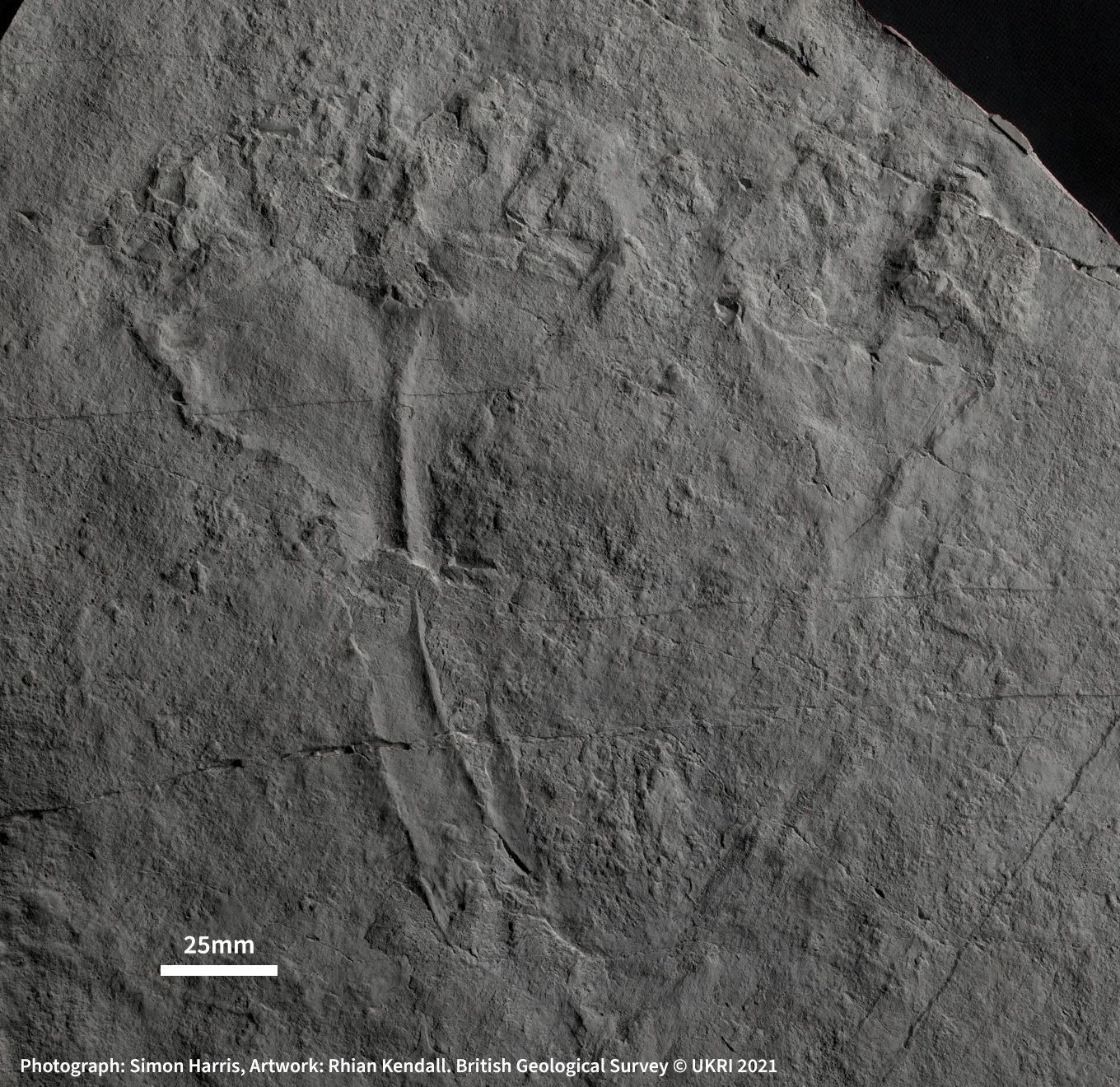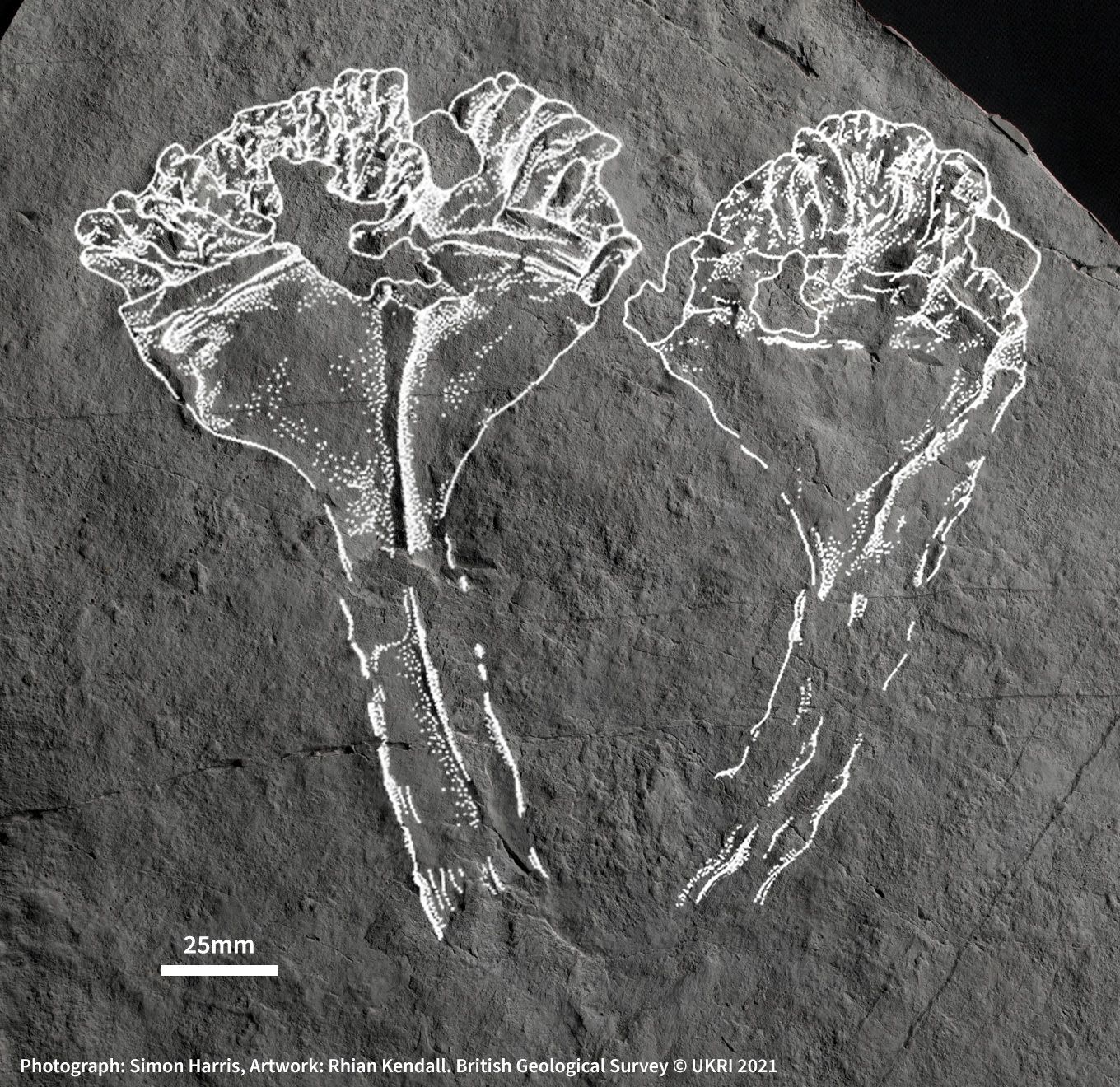Fossil of the first animal predator named after David Attenborough
And it looks like a bouquet of flowers
And it looks like a bouquet of flowers
The 560-million-year-old fossil is related to the corals, jellyfish and anemones that still live in our oceans today – but predates them by over 20 million years.
Found in Charnwood Forest, near Leicester in England, the palaeontologists who discovered the specimen named it Auroralumina attenboroughii in honour of Sir David Attenborough. The first part of its name is Latin for ‘dawn lantern’, commemorating its ancient age and uncanny resemblance to a burning torch – but we think it looks more like a bunch of flowers, or maybe some broccoli. Is this a new ink blot test?
The national treasure said the tribute has “truly delighted” him.
“When I was at school in Leicester I was an ardent fossil hunter. The rocks in which Auroralumina has now been discovered were then considered to be so ancient that they dated from long before life began on the planet. So I never looked for fossils there.
“A few years later a boy from my school found one and proved the experts wrong. He was rewarded by his name being given to his discovery. Now I have – almost – caught up with him,” he said in a statement to press.
Here, he refers to Roger Mason, who was honoured with the naming of the Charnia masoni – one of the oldest fossilised animals. Coincidentally, it was also found in Charnwood Forest in 1957. Who knew Leicester would be such a gold mine?



In 2007, palaeontologists from the British Geological Survey spent over a week painstakingly cleaning a 100m square rock surface with toothbrushes and pressure jets. The impression of upwards of 1000 fossils was captured with a rubber mould. It was the Auroralumina attenboroughii, a “lonely little fossil”, that stuck out.
Dr Frankie Dunn from the Oxford University Museum of Natural History, who led the study, told press: “This is very different to the other fossils in Charnwood Forest and around the world. “Most other fossils from this time have extinct body plans and it’s not clear how they are related to living animals.
“This one clearly has a skeleton, with densely-packed tentacles that would have waved around in the water capturing passing food, much like corals and sea anemones do today.
“It’s nothing like anything else we’ve found in the fossil record at the time.”
Dunn believes it originated from shallower water than the rest of the fossils found in the forest.
“All of the fossils on the cleaned rock surface were anchored to the seafloor and were knocked over in the same direction by a deluge of volcanic ash sweeping down the submerged foot of the volcano, except one, A. attenboroughii.
“It lies at an odd angle and has lost its base, so appears to have been swept down the slope in the deluge.”
The fossil was dated at the British Geological Survey’s headquarters using zircons in the surrounding rock – a tiny, radioactive mineral often used as a geological clock by determining how much uranium and lead are present.
Dunn continued to explain: “The Cambrian Explosion was remarkable. It’s known as the time when the anatomy of living animal groups was fixed for the next half a billion years.
“Our discovery shows that the body plan of the cnidarians was fixed at least 20 million years before this, so it’s hugely exciting and raises many more questions.”



